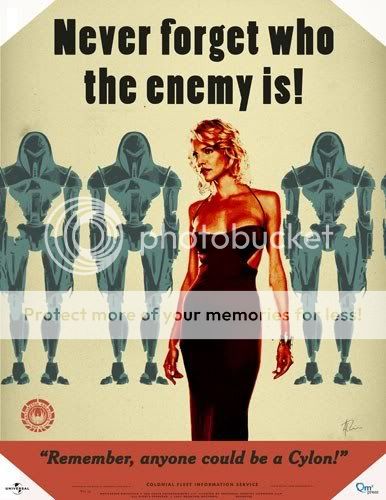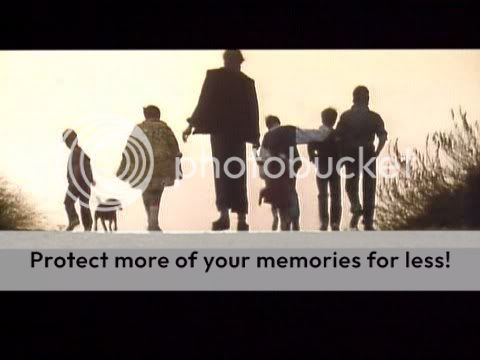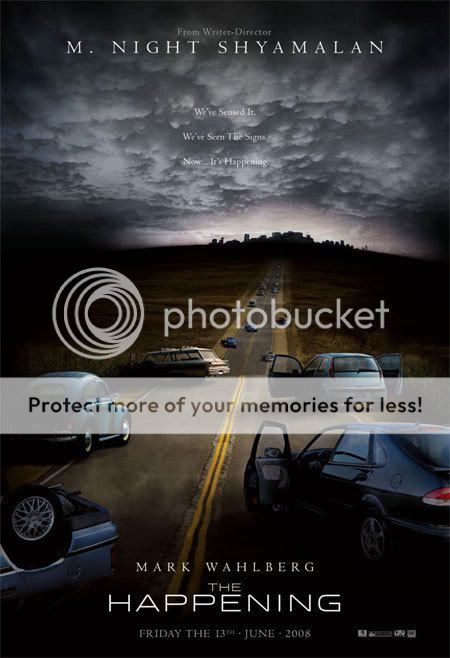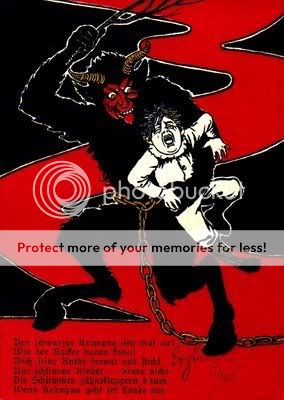The biggest thing I Am Legend has going against it is its title. Simply change the main character’s name and call the movie something else (I dunno, Fresh Prince vs. the Vampires has a nice ring to it) and I’m pretty sure you’d see most of the objections being flung at it from the horror-cognoscenti corner evaporate. As it stands now, it takes someone who isn’t attached to the source novella–someone like me, in other words–to appreciate that while as an adaptation of the book it’s pretty terrible, as a post-apocalyptic survival-horror film it’s pretty damn good.
As you’ve no doubt heard, the differences between Francis Lawrence’s film, written by Mark Protosevich and Akiva Goldsman, and Richard Matheson’s iconic novella are not a case of “they cut Tom Bombadil and made Faramir a bit of a jerk.” Goodness, no. With the exception of the title, the name of the protagonist, and the very basic concept–sole human survivor in a world full of people who’ve been transformed into monsters that want to kill him–virtually everything has changed, frequently radically, and in several crucial instances to the diametric opposite of what was present in the original. The setting has changed from the California suburbs to Manhattan. The hero, Robert Neville, has changed from just some guy to the scientist the world was counting on to stop the plague before it got out of control. The antagonists have changed from more-or-less intelligent, weak bloodsuckers to acrobatic engines of full-fledged cannibalistic destruction that come across like hybrids of the critters from The Descent and the infected from 28 Days/Weeks Later. Their origin shifts from largely mysterious with a few nods in a viral direction to being made clear in the film’s opening scene (an experimental cancer cure involving rerouting the measles virus to attack cancerous cells ends up giving its recipients rabies-like symptoms that end up either killing them outright or turning them into monstrous, infectious killing machines themselves). Neville’s reason for killing them has changed from a drive to exterminate to a drive to cure. Most fundamentally of all, the key plot twist, the ending, and the meaning of the title itself are all complete 180s from what they are in the book. It’s honestly a bit baffling why they bothered to “adapt” the thing at all.
But as I mentioned, I’m not a huge devotee of the book. (I read it, enjoyed it, never thought much about it since.) Therefore my bafflement stems not from outrage on the original’s behalf, but from a vain wish that the movie could have headed the inevitable objections from the book’s partisans off at the pass by simply making the exact same movie they ended up making without waving the title around like a red flag in front of a bull. That’s because the movie they made is a sophisticated, moving, and unique take on the post-apocalyptic genre, a bait-and-switch job that at first comes across like the ultimate survival-horror competence fantasy only to reveal itself as an examination of the massive psychological toll such competence takes.
The lynchpin here is obviously Will Smith’s Robert Neville. For about 50% of the movie he’s the closest cousin to James Bond or Batman the zombie(ish) genre has ever seen. He’s a high-ranking Army officer, brilliant scientist, loving father and husband, loyal dog owner, stunning physical specimen (the ladies reacted to his shirtless workout like wolves from a Tex Avery cartoon), Bob Marley fanatic (a major plot point!), art aficionado (one of the film’s best running visual gags (and it has several, including a big Times Square billboard for a Superman/Batman movie “coming soon”) are that his walls are lined with masterpieces from abandoned NYC’s museums), and ridiculously proficient survivalist all rolled into one. His house, with a lovely view of Washington Square Park, is tricked out with all the security devices of a brownstone-sized panic room, including a few square blocks’ worth of booby traps and emergency lighting–not to mention a fully-stocked pantry and arsenal, keys to dozens of different vehicles arranged alphabetically, and its own supply of electricity and running water. He hunts for deer in Times Square, grows corn in Central Park, fishes in the reflecting pool in the Metropolitan Museum, and has every AM frequency in New York broadcasting a message for survivors to meet him at the South Street Seaport at midday, an appointment he keeps without fail even though no one’s ever come. Best of all, he’s got a basement laboratory where he continues his quest to derive a cure for the plague from his own natural immunity, and has capturing live specimens for his research down to a Rousseau-from-Lost-like science. The guy keeps busier as the last man on Earth than I do right now.
But there’s a price to be paid for being on top of your game all day every day with no one to fall back on. At first it’s glimpsed only in quirky, funny behavior like Neville’s one-sided conversations with his dog (relatable to any pet owners; I myself actually provide the voices of my cats in such exchanges) and his slightly stranger yet understandable use of mannequins as the staff and patrons of the video store he visits every day to stay entertained. But where both the film and Smith–who’s asked to carry about 70-80% of the movie as the only human being on screen, and pulls it off–are most impressive is when the competence cracks.
So much of Neville’s skill as a survivor is predicated on routine. This obviously includes vital tasks such as waking at sunrise and shutting down his house at sunset, being at the potential survival rendez-vous point at midday, and of course the rigorous testing and experimentation involved in attempting to find the cure to the virus. But it also includes everything he does that passes for recreation: practicing his golf swing on the deck of the Intrepid, renting his way alphabetically through the video store, cycling through The Today Show‘s daily archival tapes, playfully bantering with his mannequin acquaintances. The film’s astute visuals drive home the fact that everything must be in its right place, from the keys to his cars to the Polaroids of all his dead monster guinea pigs. So all it ultimately takes to put him on a crash course with disaster is for one of those mannequins to be mysteriously moved from its customary place outside the video store, so that Neville finds it standing, silent and eerie and wrong, at the steps of the Met. Within seconds he’s hallucinating that it’s looking at him, screaming denials and warnings at it, spraying it with machine-gun fire, strafing the surrounding buildings. Finally he makes moves that result in a sequence that’s every bit as heartwrenching as you’d imagine it would be yet not as crass and manipulative as I feared when I initially detected where it was heading. (I won’t spoil it.) From there it’s a short trip to the best scene in the film, simultaneously its most moving and most disturbing, when Neville, stoned and half-incoherent thanks to a handful of antidepressants, literally begs one of the video-store mannequins to say hello back to him. Now, I’m sure it helps that the only Will Smith movies I’ve ever seen are dimly remembered viewings of the execrable Independence Day and the empty-calorie Men in Black back in high school, so I’m not associating his depiction of grief and misery here with his reaction to, I don’t know, something that really upset him in Bad Boys 2. But he’s all bloodshot eyes, slurred speech (“promised my friend” comes out like “I miss my friend,” which I’m sure is intentional), and desperation in this scene, and it’s lovely and sad.
That’s actually the mood of most of the movie. With the exception of some flashbacks (which is where the bulk of the trailer and commercial pyrotechnics hail from) and the very occasional run-in with a monster and/or pride of lions, it’s virtually a meditation on deserted New York City and all the awe and loneliness such images evoke. I for one have no idea how they pulled all those scenes off; it’s got to be digital, I guess, and it’s stunning. It also made for a great opening-night packed-theater New York City movie-watching experience, evoking laughs and gasps in equal measure any time a recognizable landmark or neighborhood was shown overgrown with vegetation and frequented by animals larger than squirrels, pigeons, and rats. (I saw it in that theater at Union Square, so a shot of the nearby subway entrance completely deserted practically got a standing ovation.) Heck, the poor woman next to me was practically manifesting some sort of pre-traumatic stress disorder every time you saw empty Midtown or decrepit Upper East Side, occasionally commenting to no one in particular that we’re just a couple years and one dirty bomb away from just such a scene. It was a fun spectacle, but after a while it began to weigh on you, too.
It is in fact the use of Manhattan that’s the film’s most successful generator of chills. There’s one memorably suspenseful cat-and-mouse game in which, like many similar, successful sequences, our vision is limited along with the character’s, and one creepy image involving a hyperventilating “hive” of dormant creatures. But other than that, to be quite frank, the monsters kind of suck. Part of it is that we’ve seen their like before, and in more frightening movies, as I mentioned above. Part of it is a strange decision to do them in what looks like 100% CGI, and not the greatest at that. I’m sure it has something to do with the need to distort and amplify their physicality to the point where the filmmakers felt humans in suits and masks wouldn’t do, but nuts to that action. If Neil Marshall can do The Descent–hell, if Peter Jackson can do the orcs and uruk-hai in The Lord of the Rings–this guaranteed blockbuster can do creatures that don’t look like something you’d shoot in a Resident Evil game (and I’m not even talking about the infected dogs). Thankfully, the movie itself seems to realize its limitations, and the monsters probably get no more than fifteen minutes total screen time. I know I’ve given that line about how “the human stuff was the best part of this horror movie” the business recently, but boy was it ever true here.
And it remains true up until just before the very end. In fact the movie’s most interesting exploration of the perils of competence come in its final quarter, when Neville is forced to by circumstance, in the form of a mysterious pair of fellow survivors, to radically reevaluate his view of the post-plague world. To the film’s eternal credit it never beats you over the head with the fact that his repeated, heated insistence that “everyone, everyone, is dead” is ridiculous given that he’s saying it to people who, like himself, are alive; they just hang there, uncommented upon, the words of someone who obviously would never accept information to the contrary even when it’s literally staring him in the face. His initial attempts to interact with his newfound companions are at once vulnerable and bizarre, stripped of the sense of proportionate response that human interaction inculcates us with–he smashes the breakfast they prepare for him to pieces because of both their belief in a survivor colony up in Vermont and because (one of the film’s big laugh lines) he’d been saving, for reasons delightfully unspecified, the bacon they cooked; he tries to win them back over by flawlessly reciting about two minutes’ worth of dialogue from Shrek along with the movie as they watch it. The underlying emotion to the entire segment, I think, is fury. Fury that this woman and this child survived while his wife and his child did not. Fury that someone survived to bear witness to his failure at finding the cure, or “fixing this” as he constantly puts it. Fury that they stopped him from killing himself, and fury that he tried. Fury, perhaps, that anyone less competent than he survived at all, and fury that others might have survived completely independent of whether or not he succeeds in his quest for a cure. In the view of Neville, the apotheosis of survivor types, survival can only exist through him, with him, and, literally, in him.
He ends up being righter than he has any right to be, which is where the film falters–right at the end. A climactic monster attack suddenly has us in Signs-land, where a fortuitous coincidence gives Neville the sign he needs to do the right thing and restores his faith in God and the fundamental justness of the world. Now, this worked in Signs (I know, I know, your mileage may vary, but this is my blog) because that was the whole point of the film–Mel Gibson’s character’s bitterness and faithlessness, its effect on his family, and its ultimate reversal when heroism is called for. Here, however, that theme is slapped onto the film in the final reel, with the first mention of both belief in and denial of God taking place about ten minutes before the closing credits. (Timeline compresson trips up the film a bit elsewhere, actually, as Neville notices anomalous behavior from the monsters for the first time only one day before that anomalous behavior is shown to have evolved to a point beyond this brilliant scientist and tough customer’s wildest expectations.) We’ve already been shown that his behavior is heroic, and through his impassioned exegesis of the music and message of his beloved Bob Marley we’ve even been shown that he has a boundless faith in humanity’s ability to do the right thing, despite the virus’s manmade origin (thanks, minute-long cameo by Emma Thompson as the well-meaning scientist who uses condescending metaphors to explain her innovation to the hoi polloi and accidentally wipes out humanity!). I know that those with deeper faith than mine might disagree, but gilding the lily by forcing a road-to-Damascus moment misses the point and throws the balance of the film ever so slightly out of whack at the last moment. All we really wanted to know is not if he can connect with the Almighty, but whether he can connect with anything at all that isn’t himself. And yes, there’s the kind of happy ending that should have people who love the book, hated the end of Spielberg’s War of the Worlds, or both throwing their popcorn at the screen. (Soundtracked by church bells, no less!) I have no intrinsic problem with a happy ending, in fact I found Smith’s Neville so likable that I was practically praying for one, but this was laying it on kinda thick.
That said, I feel like this is a film I’m much more likely to return to than, say, the recent and comparable The Mist. Actually, I tried to see that movie again yesterday, figuring I’d be able to enjoy the things I enjoyed about it more now that I know what to expect, but it’s all but gone from theaters. That’s probably not a fate you need to worry about befalling I Am Legend, in part because it stars Will Smith and has an ending in which the phrase “happily ever after” wouldn’t feel entirely out of place, but only in part. Unlike the characters in The Mist, the character (no plural necessary) in I Am Legend surprises. He’s something I hadn’t seen before. And while, yes, that includes the film’s ostensible source material, it sure would be a shame if you let that get in the way.












